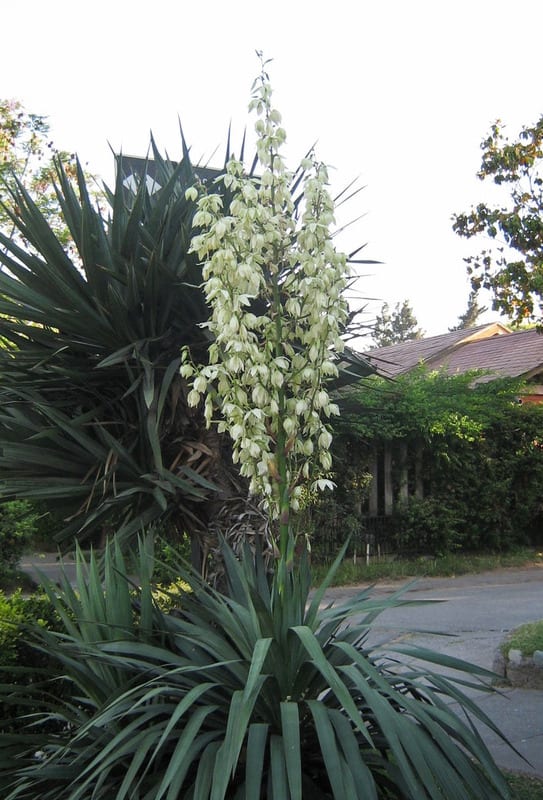Spanish Dagger, Soft-Tip Yucca, Moundlily Yucca, Palm Lily
Yucca gloriosa

🌿 Morphology
🌞 Growing conditions
🌍 Origin and family
🌾 Uses
Warning: Despite the care taken in writing this sheet, it is essential to cross-reference sources before using or consuming any plant. When in doubt, consult a qualified professional
Permaculture uses
The flowers are edible and can be eaten raw or cooked. The fruit is also edible when ripe. The roots have been used to make soap due to their saponin content. Yucca gloriosa provides excellent shelter and habitat for wildlife and can be used as a windbreak or barrier. Its drought tolerance makes it suitable for xeriscaping and water-wise gardens. Fibers from the leaves can be used for cordage and weaving.
Permapeople description
Yucca gloriosa is a species of evergreen shrub in the family Asparagaceae, native to the southeastern United States, from coastal Virginia to central Florida and east Texas. Common names include Spanish dagger, soft-tip yucca, Torrey's yucca, and sea islands yucca.
Botanical description
Yucca gloriosa is an evergreen shrub or small tree, typically growing to a height of 5 to 8 feet, but can reach up to 15 feet. It features a single or multi-trunked stem topped with a rosette of stiff, sword-shaped leaves that are 12 to 24 inches long and up to 2 inches wide. The leaves are dark green to bluish-green and have smooth or finely toothed margins. In late summer to fall, it produces a tall, erect inflorescence of bell-shaped, creamy white flowers that are about 2 inches long. The fruit is a dry, oblong capsule.
Companion planting
Yucca gloriosa is generally compatible with other drought-tolerant plants. Its spiky foliage can deter herbivores, potentially benefiting nearby vulnerable plants. Avoid planting near water-loving plants as Yucca prefers dry conditions.
Propagation methods
Propagation is typically achieved through seeds, stem cuttings, or offshoots (pups). Seeds should be scarified and stratified before sowing. Stem cuttings can be rooted in well-draining soil or water. Offshoots can be carefully removed from the base of the plant and transplanted.
History and traditions
Native Americans have used Yucca gloriosa for centuries for its fibers, which were used to make rope, mats, and baskets. The roots were used medicinally as a poultice for wounds and skin ailments. In some cultures, the flowers are considered a delicacy.
Usage calendar
Flowering occurs in late summer to fall (August-October). Planting is best done in spring or fall. Pruning can be done at any time of year to remove dead or damaged leaves. Harvesting of flowers or fruit is done when they are ripe.
